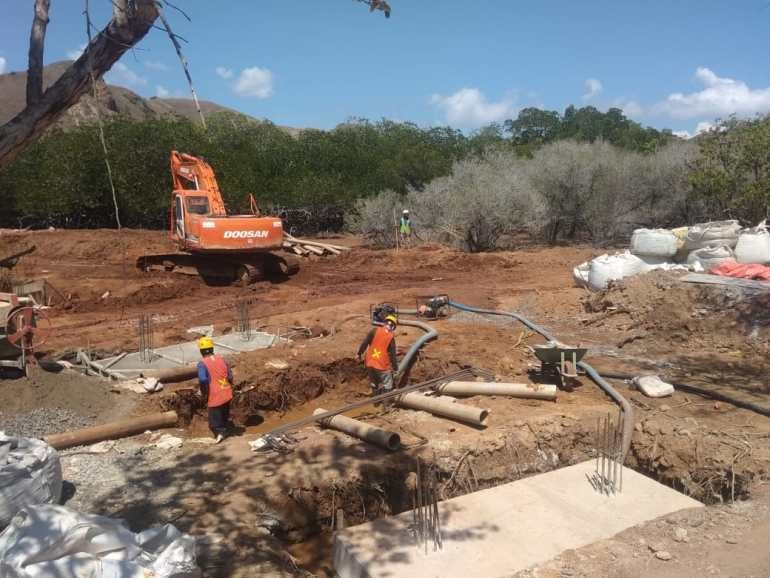The Komodo dragon, a fearsome 200-pound lizard with the venom to stop a man's heart in hours is set to be the newest attraction in the Indonesian peninsula. The Jurassic Park project of the Indonesian government plans to charge tourists for observation and close encounters with the mighty lizards.

Must-Know Komodo Dragon Facts
According to National Geographic, the Varanus komodoensis or most commonly known as the Komodo dragon is the heaviest lizard on earth. These tropical loving lizards can grow up to 10 feet long and weigh over 300 pounds. There have been fossil remains that determine the Komodo dragon's origin in Australia several thousand years ago.
Komodo dragons reside mostly in tropical islands. The once proud and terrifying lizard with shark-like teeth is now reduced to roughly 6,000 specimens that live in the Komodo National Park, one of the UNESCO World Heritage Site spread across 3 Indonesian islands.
The islands are mostly underdeveloped with only a few locals. However, the Indonesian government plans to change this, at least for Rinca Island.
The Indonesian Jurassic Park Construction

The Komodo dragon's fearsome reputation is one of the main reasons that makes Jurassic Park enticing for some tourists.
According to an article by Aljazeera, 1,300 Komodo dragons currently live on Rinca Island. Subardja, one of the parks guide on the island expressed to Aljazeera his concern for the reptiles that appear to be bothered by the construction clamor of the construction.
The government aims to construct a "Y-shaped" dock that resembles the forked shaped tongue of the Komodo dragon where tourists can dock off their boats. A large circular viewing deck and walkway will also be constructed where visitors can walk around the park and bask in the Komodo dragons' glory.
"Premium, world-class tourism. The Komodo dragon is like the panda- highly respected..." expressed Inung Wiranto from the Ministry of Environment and Forestry.
Why do Locals Fear for the Komodo Dragons?
Locals have not been shy in expressing their concerns for the 300-pound lizard. Many believe that the construction and the park itself will only harm the indigenous reptiles.
In 1991, The Komodo National Park was declared as a UNESCO World Heritage Site. Because of the clamor towards the project, the Paris-based cultural organisationKomodo dragons' behavioral patterns ensure the development will neither harm nor disturb the mighty lizards.
The fear and controversy surrounding the project is not because of the fearsome reputation of the Komodo dragon, but, the environmental fear for the animals. Environmentalists fear that the park will only disrupt the Komodo dragon's natural life which will further speed up the species demise.
In addition, environmentalists fear the inevitable mowing down of trees that have been seen in every developmental project. This, in turn, would mean the loss of natural prey for the Komodo dragons.
Overall, locals and environmentalists alike see no beauty or benefit in the Indonesian Government "Jurassic Park" project.
Check out more news and information on Endangered Animals on Science Times.
© 2026 ScienceTimes.com All rights reserved. Do not reproduce without permission. The window to the world of Science Times.










